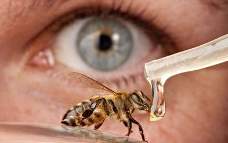|
Unprecedented fungal threats to ecosystem, health and food supply
by research report via gan - Nature Saturday, Apr 14 2012, 10:43am
international /
environment /
other press
"The past two decades have seen an increasing number of virulent infectious diseases in natural populations and managed landscapes. In both animals and plants, an unprecedented number of fungal and fungal-like diseases have recently caused some of the most severe die-offs and extinctions ever witnessed in wild species, and are jeopardizing food security. Human activity is intensifying fungal disease dispersal by modifying natural environments and thus creating new opportunities for evolution. We argue that nascent fungal infections will cause increasing attrition of biodiversity, with wider implications for human and ecosystem health, unless steps are taken to tighten biosecurity worldwide." -- Nature

CommonDreams Aggregation:
An "unprecedented" number of fungus-caused diseases are threatening biodiversity and the global food supply, scientists say in a study published yesterday.
"In both animals and plants, an unprecedented number of fungal and fungal-like species have recently caused some of the most severe die-offs and extinctions ever witnessed in wild species, and are jeopardizing food security," the study warned.
In the research published in the journal Nature, scientists from the University of Oxford, Imperial College London, and institutions in the US say fungal infections destroy 125 million tons of the top five food crops - rice, wheat, maize, potatoes and soybeans. In addition to food crops, fungal infections are destroying trees, amphibians, bees, sea turtles and corals and bats.
"Crop losses due to fungal attack challenge food security and threaten biodiversity, yet we are woefully inadequate at controlling their emergence and proliferation," said corresponding author Sarah Gurr, a professor of molecular plant pathology at Oxford University.
Dr. Matthew Fisher, from the School of Public Health at Imperial College London, and a corresponding author of the study, said, "The alarming increase in plant and animal deaths caused by new types of fungal disease shows that we are rapidly heading towards a world where the 'rotters' are the winners. We need strive to prevent the emergence of new diseases as we currently lack the means to successfully treat outbreaks of infection in the wild."
* * *
Imperial College London: Tackle fungal forces to save crops, forests and endangered animals, say scientists
More than 600 million people could be fed each year by halting the spread of fungal diseases in the world's five most important crops, according to research published today in the journal Nature.
Furthermore, data reviewed by scientists suggests that in 70% of cases where infectious disease causes the extinction of a type of animal or plant, an emerging species of fungus is behind the problem. Evidence suggests this figure is increasing.
The scientists behind the study, from the University of Oxford, Imperial College London, and institutions in the US, are calling for new solutions to prevent the proliferation of existing and emerging fungal infections in plants and animals in order to prevent further loss of biodiversity and food shortages in the future. [...]
Diseases like rice blast, soybean rust, stem rust in wheat, corn smut in maize and late blight in potatoes affect more than just productivity; many have wide ranging socio-economic costs. Trees lost or damaged by fungi fail to absorb 230-580 megatonnes of atmospheric CO2, equivalent to 0.07% of global atmospheric CO2, an effect the scientists say is likely to be leading to an increase of the greenhouse effect.
* * *
Agence France-Presse: Fungus threat escalates for food, wildlife: scientists
Bats in North America and Canada are being decimated by "white nose syndrome," a pathogen called Geomyces destructans, which causes a white fungal patch to grow on their muzzles. The fungus is believed to have a natural home in cave soil.
Species of the Microsporidia family of fungus are being blamed in part for for so-called colony collapse disorder among honeybees.
In tropical climates, the fungus Fusarium solani is causing eggs laid by the loggerhead turtle to fail to hatch, while a soft coral, the sea fan, is in decline, its immune system depressed by a soil fungus.
A pathogen called Magnaporthe oryzae, causing a disease called rice blast, has led to losses of 10% to 35% in the rice harvest in 85 countries.
Another fast-emerging concern for farmers is wheat rust, caused by Puccinia graminis. A strain called Ug99 can cause 100% crop loss, helped by farmers' over-dependence on a single wheat type.
See:
http://www.commondreams.org/headline/2012/04/13-6
http://www.nature.com/nature/journal/v484/n7393/full/nature10947.html
<< back to stories
|